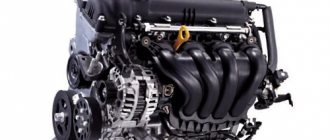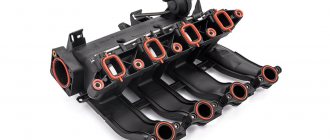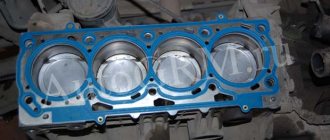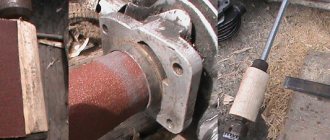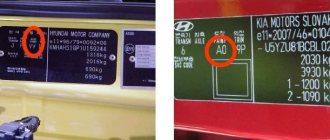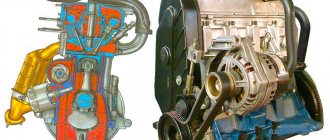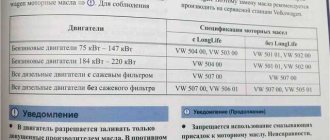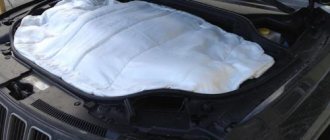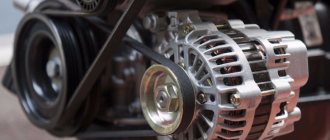The 1.4 TSI EA211 engine became the successor to the EA111. It is produced on the premises of the Czech engineering plant in the city of Mlada Boleslav, part of the Volkswagen concern. This engine was considered the standard engine in the entire VAG line and was installed on many models of Audi, Skoda, Volkswagen and Seat cars. What was new in the design was that changes were made to the cylinder head, a toothed belt was installed in the timing drive instead of a chain, the cylinders were reduced in diameter, the connecting rods, like the entire engine, were lightened, and double cooling appeared. The cylinder block has cast iron liners, but unlike the cast iron on the EA111, it is made of aluminum alloy. The pistons and cylinders have become 2 mm smaller in diameter, the crankshaft has been lightened, and its stroke has increased to 80 mm; accordingly, lightweight connecting rods have been used. The 1.4 TSI EA211 has improved in many respects, especially in terms of fuel consumption, but there are many shortcomings and problems.
The head, like on the EA111, has sixteen valves and two camshafts, but has a 180-degree orientation, as a result of which the exhaust manifold is located at the rear. Modification of the 122 hp engine. s., which has only one phase shifter mounted on the intake camshaft, is inferior in this modification to 140 hp. pp., equipped with phase shifters on two camshafts of the intake and exhaust valves, respectively. Not for the better, instead of a timing chain, a timing belt is used, which must be replaced every 60,000 km. A new cooling system with two circuits has been introduced. Additionally, 140 l. With. modification, an AST system appeared to deactivate two cylinders. In addition, the intake manifold is turbocharged with a supercharged air cooler. The turbines on the compared engines differ in size and pressure.
Weaknesses of the 1.4 TSI EA211 engine
Actuator. This device performs the function of relieving excess pressure that occurs in the turbine during engine operation. It is installed on it. When the driver increases the speed, the actuator reduces the pressure, thereby preventing the power unit and turbine from failing. In the 1.4 TSI EA211 engine, it can jam, which can lead to damage to the engine or turbine. The engineers did not take into account that due to high temperatures the actuator could fail. Car owners can encounter this problem at any mileage. It can appear both at the very beginning of using the car, and after driving more than 100 thousand kilometers. You can fix this problem either yourself or at the dealer. The old broken actuator is removed and replaced with a new one. It is recommended to lubricate it with heat-resistant grease to avoid recurrence of breakdown. The dealer replaces the turbocharger under warranty or for a lot of money, or rather more than 100 thousand rubles. However, it is possible to simply change the actuator; it all depends on the integrity of the dealer. Moreover, if the car is often stuck in traffic jams, it is sometimes recommended to spin the engine to maximum speed while driving, thereby allowing the turbine to work and the actuator not to sour.
Cylinder head. The first versions of the engine had a factory defect, which consisted of improper processing of the cylinder head. This led to high oil consumption and, as a rule, the dealer fixed the problem under warranty. The heads were replaced with serviceable ones and the oil consumption in the engine returned to normal. Moreover, a defect in the cylinder head created another problem: the car took a long time to warm up at low temperatures outside. This is most often noticeable among motorists who live in cold regions.
Turbine. Many car owners have experienced noise and rattling at certain speeds. This may indicate either a turbine malfunction or other breakdowns. To eliminate noise, a special bracket was installed directly into the turbine. The turbine's service life is not long; it is a consumable that needs to be changed from time to time. The service center may offer to repair the turbine, or replace it with a new one, which is not very cheap.
Timing belt. Extraneous sounds when the engine is running, some rattling on the left side of the engine may indicate a faulty timing belt. However, you should not panic right away if the unpleasant sound disappears after the power unit warms up. It is worth checking the belt at a mileage of 60 thousand kilometers and then every 30 thousand. Most often, replacement is carried out at a mileage of more than 100 thousand kilometers, it all depends on driving style and timely maintenance of the car.
Pump with 2 thermostats. To lighten the engine, not the most durable materials were used. The engine cooling system includes plastic products, which are a priori short-lived and often do not provide a tight seal in the system, which leads to coolant leakage. Leaks can be noticed when the air filter is removed. Moreover, one of the thermostats is not working correctly, as a result of which the coolant does not flow through the required circuit. After 200 thousand, the entire system will need to be replaced.
Main design features of the 1.8 TSI engine
The 1.8 TSI engine was developed almost from scratch, since its predecessors from the EA113 series could no longer meet emissions standards. The design features and main technical parameters of the motor are as follows:
- a cast iron cylinder block 22 cm high with a pair of balancing shafts, one of which drives the cooling system pump through a belt drive;
- a crankshaft with eight counterweights provides the piston group with a stroke of 84.2 mm;
- height of lightweight pistons – 29.8 mm;
- connecting rod length – 148 mm;
- aluminum cylinder head with 16 valves and two camshafts;
- intake valve diameter – 34 mm;
- exhaust valve diameter – 28 mm;
- valve stem diameter – 6 mm;
- mechanism for synchronizing the rotation of the crankshaft and camshafts - maintenance-free timing chain;
- variable profile intake manifold with swirl flaps;
- the direct gasoline injection system is equipped with injectors with six nozzles (sprayers) operating under pressure up to 150 atmospheres;
- The engine is supercharged by the KKK K03 supercharger, which develops pressure up to 0.6 atmospheres, which adds 30–45 hp to the engine. With. power; turbocharging made it possible to reduce the compression ratio in the combustion chambers to 9.6 units.
This engine is equipped with models with a longitudinal and transverse layout of the power unit. Its operation is controlled by the Bosch Motronic MED 17.5 electronic control unit. The engine meets the requirements of the Euro-4 environmental standard. Below are detailed technical characteristics of the Volkswagen 1.8 TSI engine of the first stage.
Disadvantages of the 1.4 TSI EA211 engine
Low resource on 95 gasoline. The problem with the quality of gasoline in Russia remains relevant, therefore, in practice, AI-95 gasoline is close in properties to AI-92. Like many small-displacement turbocharged engines, the EA211 has a short service life compared to naturally aspirated engines. Despite this, this power unit cannot be called unreliable, but it has a high probability of problems occurring over a long mileage. The complex design and shortcomings of engineers lead to rapid wear of the engine and its components. Using gasoline with an octane number of 98 and oil recommended by the manufacturer, the internal combustion engine runs 250,000-300,000 km.
High cost of spare parts and maintenance. Not every car owner is ready to spend time and money on engine repairs, so it is recommended not to save on the maintenance of a new car with a 1.4 TSI EA211 engine, but to be careful when selecting a used vehicle. You should not choose a car with the above-mentioned engine if you do not have the funds for sudden repairs. Also, the engine will not tolerate low-quality fuel. Preferably AI-98 gasoline, which is quite expensive.
Binge on butter. It appears over time on almost every car. Usually after 50-60 thousand kilometers. You have to add oil more often, and it must be of high quality, otherwise the engine itself may fail due to scuffing in the cylinders. Because of this, the temperature in the engine increases, it begins to wear out faster and loses its safety margin.
Loss of traction and power. During operation over long distances, the car begins to drive more slowly and is reluctant to respond to pressing the accelerator pedal. Some car owners do chip tuning to increase power. This occurs due to the increase in turbine pressure. Accordingly, horsepower increases, but the engine resource decreases.
Diesel engine 2.0 TDI
The third generation Skoda Octavia is supplied to Russia with one version of a 2-liter diesel engine with a power of 143 hp. Carbon dioxide emissions are just 119 g/km and fuel consumption is 5.1 l/100 km. Maximum torque of 320 N*m is achieved in the range of 1750-3000 rpm. The 2.0 TDI engine is also available with an automatic transmission.
Applicability of the 1.4 TSI EA211 engine in cars by year of manufacture
| Make, model of cars with 1.4 TSI EA211 | Engine model 1.4 TSI EA211 | years of use | ||||||
| Seat Leon III | CPWA | 03.2014 — | ||||||
| Skoda Octavia III | 03.2015 — | |||||||
| Volkswagen Golf VII | 04.2013 — | |||||||
| Audi A3 8V | 02.2014 — | |||||||
| CZCC | 02.2016 — | |||||||
| CMBA | 05.2012 – 04.2014 | |||||||
| Seat Leon III | 11.2012 – 03.2014 | |||||||
| Volkswagen Golf VII | 08.2012 – 04.2014 | |||||||
| Audi | A1 | CZCA | 11.2014 | |||||
| A3 8V | 07.2013 – 04.2016 | |||||||
| Q3 8U | 06.2016 | |||||||
| Siat | Leon III | 04.2014 — | ||||||
| Toledo IV | 07.2015 — | |||||||
| Skoda | Kodiag | 03.2017 — | ||||||
| Rapid | 04.2015 — | |||||||
| Fabius III | 04.2018 – 08.2018 | |||||||
| Superb III | 03.2015 — | |||||||
| Yeti | 06.2015 — | |||||||
| Volkswagen | Golf VII | 04.2014 — | ||||||
| Passat B8 | 07.2014 — | |||||||
| Tiguan I | 05.2015 – 01.2016 | |||||||
| Tiguan II | 06.2016 — | |||||||
| Seat Leon III | CHPA | 11.2012 – 03.2014 | ||||||
| Skoda Octavia III | 12.2012 – 05.2015 | |||||||
| Volkswagen Golf VII | 08.2012 – 04.2014 | |||||||
| Audi | A1 8X | CPTA | 02.2013 – 11.2014 | |||||
| A3 8V | 02.2013 – 04.2016 | |||||||
| Seat Ibiza (6J/6P) | 12.2013 – 08.2015 | |||||||
| Volkswagen | Golf VII | 08.2012 – 04.2014 | ||||||
| Polo V | 10.2012 – 03.2014 | |||||||
| Audi | A4 B9 | CZDA, CVNA | 08.2015 — | |||||
| A5 F5 | 2017 — | |||||||
| Siat Alhambra II | 05/2015 — | |||||||
| Volkswagen Sharan II | ||||||||
| Skoda | Kodiag | 03.2017 — | ||||||
| Octavia III | 05.2015 — | |||||||
| Yeti | 06.2015 — | |||||||
| Volkswagen | Beatle | 10.2014 — | ||||||
| Golf VII | 04.2014 – 06.2017 | |||||||
| Passat B8 | 07.2014 — | |||||||
| Tiguan I | 05.2015 – 01.2016 | |||||||
| Tiguan II | 06.2016 — | |||||||
| Touran II | 05.2015 — | |||||||
| Audi | A1 | CZEA | 11.2014 — | |||||
| A3 8V | 04.2014 — | |||||||
| Q2 | 10.2016 — | |||||||
| Q3 8U | 11.2014 — | |||||||
| Siat | Ibiza (6J/6P) | 09.2015 — | ||||||
| Leon III | 04.2014 — | |||||||
| Ateka | 04.2016 — | |||||||
| Skoda | Superb III | 03.2015 — | ||||||
| Kodiag | 03.2017 — | |||||||
| Volkswagen | Golf VII | 04.2014 – 03.2017 | ||||||
| Passat B8 | 07.2014 — | |||||||
| Polo V | 04.2014 — | |||||||
| Tiguan II | 06.2016 — | |||||||
Conclusion. The disposable design of the engine does not allow the cylinder block to be repaired by grooving to repair dimensions after the end of its service life. Major repairs are possible but in an aggregate manner, that is, by replacing worn components and parts (block, crankshaft, etc.), such repairs are more expensive, in contrast to installing a contract engine.
PS Dear car owners! You can supplement the content of the weak points and shortcomings of the 1.4 TSI EA211 internal combustion engine with your feedback in the comments.
EA211 engines
This series of gasoline engines was introduced into production in 2013. They are common on Volkswagen Polo and Golf models. Passat, Octavia A7, Golf 7, Seat, Audi, and have a displacement from 1 to 1.6 liters. They are completely different from the outdated EA 111 group engines, which were installed on the same models until 2013.
Material on the topic Changing engine oil in Volkswagen Polo sedan, CFN (CFNA) engine
The reason for their appearance was the MQB platform, for which it was necessary to unify the concern’s power units. From that moment on, the manufacturer did not need to redesign the exhaust system and turbocharging from one model to another, as was done previously. Therefore, all units of the EA211 line are installed in the engine compartments at the same angle of 12 degrees and the exhaust manifold always faces away from the driver (backward when looking at the car from the front).
The cylinder blocks of the EA211 series are made of aluminum alloy, and the liners are made of gray cast iron. In general, each of the engines is at least 20 kg lighter than its predecessors from the EA111 group.
The exhaust manifold and cylinder head in these engines are practically one solid part with an individual cooling circuit. This technical solution made it possible to start the catalytic converter faster, as well as slightly reduce the temperature of the exhaust gases to extend the life of the turbocharger.
German engineers installed an intercooler in the EA211 intake manifold, which is part of the cold cooling circuit in these engines. Also on this series of engines there is a timing belt drive. The manufacturer stated that its service life is not regulated, but changes as cracks appear. I would not trust the manufacturer, I would conduct a thorough inspection of the belt every 30-60 thousand km, and at 90 thousand I would replace it. Everyone remembers how the chains did not last their stated life and, when stretched, jumped over and killed the motor.
What are the advantages and disadvantages of these units? An undoubted plus is the full-scale torque characteristic, which is expressed in confident traction already at 1400 rpm. Also, the EA211 engines are more powerful thanks to improved turbocharging.
As sad as it may be, new engines still have “hereditary” problems with oil consumption. First: the design features of the valve spring plates in the cylinder head. Second: the already discussed above problem with coking of the piston rings. The solution is to replace these parts.
Valve timing faults are also observed. Production solution: use of an optimized intake camshaft control valve.
